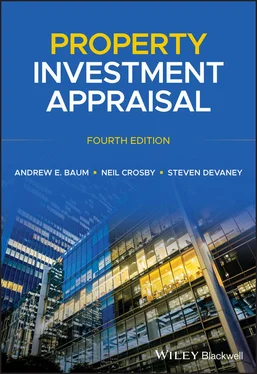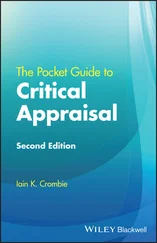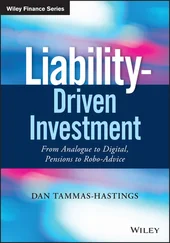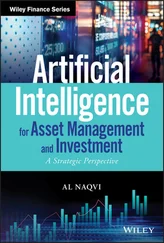The price that would be received to sell an asset or paid to transfer a liability in an orderly transaction between market participants on the measurement date.
(IASB, 2020)
This definition is expanded upon in IFRS 13. However, it can be seen that there are strong similarities with Market Value given the focus on exchange price in the context of an assumed transaction at the date of measurement. In fact, the RICS (2020a) suggests that the definitions of Fair Value and Market Value are consistent for most practical purposes. Given this, it was confusing that International Valuation Standards contained a definition of Fair Value that differed from both Market Value and the IFRS definition. The IVS definition also focused on exchange price, but dropped some of the requirements of Market Value by allowing specific circumstances affecting the parties involved to be taken into account. This concept has since been renamed Equitable Value and we do not consider it any further.
Another concept and definition of value that is not included in International Valuation Standards is Sustainable or Long Term Value. This cannot be ignored in the wake of the Global Financial Crisis (GFC) and the part that both residential and commercial real estate played in that crisis. The term ‘sustainable’ is used in the sense that it can be sustained through time and it is the basis for Mortgage Lending Value, a concept used by some European banks as a risk-management tool for their commercial loan books. Mortgage Lending Value is part of the Basel accords, along with Market Value, and is used in the determination of bank capital ratios. We discuss this concept in detail in Chapter 10.
1.2 The Appraisal Process
Appraisals play an important role in the functioning of the property market. They are used in financial statements, for performance measurement purposes, in the bank lending process, and for guiding decisions in relation to acquisition, sale, and asset management.
In financial statements, performance measurement, and for buy/sell decisions, it is important to be able to identify the most likely selling price (Market Value). For instance, banks will wish to know the current Market Value when deciding how much to lend against a property, which might have to be sold to pay off the loan in the event of borrower default. These sources of instruction have been dominant, with the result that appraisals are usually assumed to be market valuations. For some appraisers or valuers, this is the only valuation basis they use and understand.
However, a market valuation is of limited use. It identifies the most likely selling price of a property at a particular time and has no real shelf life (though some court decisions have suggested a three- or six-month lifespan). It cannot be used to identify mispricing, for example in the run-up to the global financial crisis when US homes were clearly over-valued. As a result, market valuation is not a useful tool in the analysis of markets.
Market Value relies specifically on the best evidence of trading prices of other similar assets. This doctrine is underpinned by the courts and by the perceived best practice of competent practitioners. ‘Other similar assets’ is invariably interpreted as other similar property assets. The use of transactions in similar properties raises issues regarding similarities in physical structure, location quality, and lease arrangements. Some of this text relates to how appraisers or valuers can make better use of comparable material in market valuations.
However, more sophisticated investors and increasing regulatory requirements have led to major changes in the level of advice required from valuers and valuations. Over the last 40 years, this need for more detailed advice within both valuation calculations and reports has required valuers to extend their skills. The need to consider Investment Values and, more recently, sustainable values, reflects this change.
The price paid in the market might not represent Investment Value, the value of a property to any individual investor. This value usually needs to be identified. For example, what is a prospective purchaser's subjective perception of what they should receive in return from ownership of a property asset? The investment appraisal requires an assessment of the likely income produced by the property into the future over a likely holding period (which could be different for different purchasers), set against the cost of acquiring, maintaining, and enhancing the asset. The most widely used approach to this is a discounted cash flow; the information requirements and other technical issues concerning cash flow valuation are discussed in Chapter 3.
1.3 What Makes a Good Appraisal?
The property selection policies of both major and minor property investors often include an examination of the mismatch between estimates of Market Value and Investment Value to spot pricing anomalies. Given this, any investor or advisor will benefit from a clear understanding of the difference between the Market Value of an asset and its worth to an investor or group of investors. If there is a difference, is this evidence of a poor-quality market valuation?
It is widely believed that market valuations should primarily be accurate ; that is, they should closely predict selling price. Therefore, accuracy may be a relevant and useful test of the quality of a market valuation. Investment valuations, on the other hand, should primarily be rational ; they should be professional and expert reflections of a combination of objectively measured market variables and the prospective owner's subjective estimates. We will argue in this book that all appraisals, including market valuations, should be rational. If they are, then although accuracy can never be guaranteed, greater confidence will be generated in what will be perceived as professional and expert results. The three earlier editions of this book had the stated aim of encouraging better, more rational practice in the appraisal of property investments. We have little doubt that valuation practice has improved significantly in many ways. Appraisal methods have continued to be debated and, in the last 20–30 years, more research has been undertaken on the process of valuation, so that the context in which estimates of value are produced is better understood.
Given improvements in valuation techniques, we have been able to remove some of the older theoretical material regarding methods from this edition. Nonetheless, there are calls to improve valuation techniques further, especially in the context of lending, and these have been given momentum by the Global Financial Crisis. The use of Market Value as a reference point for lending has been identified as one of the pro-cyclical pressures leading to over-lending, which in turn feeds higher prices, enabling higher lending volumes based on static loan-to-value ratios. Therefore, alternatives are being sought, as discussed in Chapter 10.
The continuing globalisation of markets and the improvement of data sources has led to more attention regarding the convergence of international processes and practices. This has raised questions concerning different levels of lagging and smoothing of valuations in different countries. Such terms refer to the extent to which market valuations keep pace with changing prices and whether they capture the full extent of any movements in such prices. The performance of some valuation-based indices of national property prices raises questions about whether appraisers in some countries even noticed there was a global financial crisis at all! However, the increasingly sophisticated educational environment and continuing development of the property industry is increasing the ability of appraisers in practice to address the complexities of valuation, and the digitalisation driven by the fourth industrial revolution will push their capabilities even further.
Читать дальше












